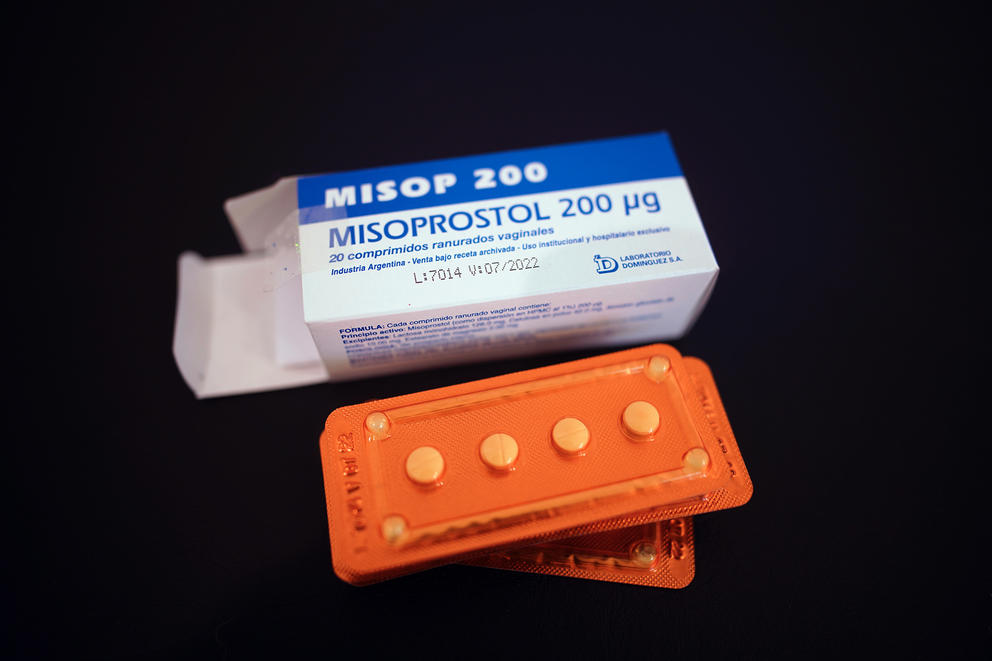Editor’s note, May 3, 2022: On Monday night a leaked draft opinion from the U.S. Supreme Court indicated that the court is likely to overturn Roe v. Wade. Crosscut is resurfacing this story in response to this development. This story remains up-to-date on what’s happening in Washington state and around the region.
That might be surprising to some. With insurance and Medicaid coverage of abortion and state-level protections to keep abortion legal if Roe v. Wade is overturned, Washington bucks national trends toward anti-abortion legislation. But even here, 59% of counties, where 10% of Washington women live, have no abortion clinic, according to data from the Guttmacher Institute, a reproductive health policy organization.
Medication abortion by mail is a new way for people living in these underserved areas to access care. Patients in Washington can now seek treatment through digital clinics like Hey Jane or virtual consultations with established local brick-and-mortar clinics like Cedar River, which has locations in Seattle, Tacoma and Renton. Because medication abortions typically end pregnancy using mifepristone and a second drug, misoprostol, making the pills available by mail means patients can have abortions safely at home without traveling to a clinic. The nonsurgical option, which is effective in ending pregnancies of up to 10 weeks’ gestation, is becoming increasingly common, comprising 39% of all abortions in the United States in 2017, according to Guttmacher. During the COVID-19 pandemic, medication abortion had the added benefit of not requiring an in-office surgical procedure — and the exposure risks that came with it.
Ying Zhang, a family medicine physician based in Seattle, said that during the pandemic, many family planning providers around the country had been "putting in protocols to provide no-touch medication abortion where patients could get care without having to come on-site."
This wouldn’t have been possible before the Biden administration’s reversal. The Food and Drug Administration had previously subjected mifepristone to what’s known as a Risk Evaluation and Mitigation Strategy. or REMS, a restriction limiting distribution to specific providers in hospitals, medical offices and clinics. That means the drug hadn’t been available in pharmacies, despite objections from the American College of Obstetricians and Gynecologists that “there is no safety reason for the restrictions.”
But in April, when the FDA temporarily lifted the REMS on mifepristone under the purview of the Biden administration, FDA Acting Commissioner Janet Woodcock confirmed in a letter to the obstetricians and gynecologogists group that existing data did “not appear to show increases in serious safety concerns … occurring with medical abortion as a result of modifying the in-person dispensing requirement during the COVID-19 pandemic.”
With the REMS no longer a factor, providing telehealth medication abortion has been much easier on some patients and providers. “Without the [REMS] injunction, people would still have had to come on-site to get the medication," said Zhang. Now they don’t have to.
But the change hasn’t fully taken effect everywhere. “Several providers have started providing medication abortion care over telehealth, but unfortunately there remain financial and logistical barriers in expanding this care here and across the country,” said Lisa Humes-Schulz, vice president of policy and regulatory affairs at Planned Parenthood Alliance Advocates, which promotes reproductive health care in Washington, Alaska and Idaho.
These logistical challenges include restrictions in 34 states banning medication abortion altogether, requiring that abortion drugs be taken in the physical presence of a doctor (despite the safety record of the drugs and low rate of complications), or requiring that the drugs be dispensed by a physician (despite data from health care organizations suggesting providers like physician assistants can also provide care safely). Idaho is one of the states that require a physician to dispense mifepristone and misoprostol.
Achieving full implementation of medication abortion by mail has been especially complicated in Idaho, said Dusty Ginner, a board member with the Northwest Abortion Access Fund, which helps people pay for abortion care in Washington, Oregon, Idaho and Alaska. Ginner said the fund had been collaborating with two Idaho providers on implementation. But “we're still working to figure out how to get Idaho on the list,” she said.
While the expansion has improved access to abortion in some rural communities governed by left-leaning state legislatures, she said, it hadn’t had the same effect in states where abortion access was already embattled to begin with. “I would say even folks in rural parts of Washington and Oregon tend to have more access to abortion than people living in the most populated area in Idaho or even in Alaska,” Ginner said.
The logistics are further complicated by a shortage of providers willing to facilitate abortion care. “Even though we technically have telehealth access to medication abortion here, there are so few local providers who are willing to engage,” Ginner said.
It’s also not yet clear how long a grace period the FDA will give the Risk Evaluation and Mitigation Strategy on mifepristone. Planned Parenthood’s Humes-Schulz said she hoped that the Trump administration’s “medically unnecessary in-person requirements for medication abortion are permanently eliminated,” and that Medicaid patients in particular will have access to medication abortion by mail.
But if medication abortion by mail is curtailed yet again, it could lead patients to the only other source currently available for mail-order abortion medication: self-managed abortion.
Although it might conjure the specter of unsafe pre-Roe abortions, major health care organizations increasingly recognize self-managed medication abortion as a safe and effective way to access abortion care—as long as it employs the same drugs, dosage, and timing in pregnancy used in a medical setting, with access to medical care if patients want or need it.
According to a report from the World Health Organization on self-managed abortion released in June: “Evidence has demonstrated that in the first trimester, individuals can safely and effectively manage their own medical abortions using mifepristone and misoprostol in combination. This strategy can offer crucial support in providing access to safe abortion care.”
Guttmacher describes the ideal model for self-managed abortion as one in which patients can safely and easily obtain misoprostol and mifepristone, and seek support from a physician if desired.
Organizations such as Aid Access and Plan C already provide information on where patients can purchase abortion drugs online, as well as information on how the drugs work. They also give highly detailed advice to patients in states where sending abortion drugs via mail is challenging; these include creative workarounds, like mail forwarding.
The FDA’s decision to allow medication abortion via mail explicitly states that it’s intended to last only for the duration of the pandemic. If the rule reverts to the Trump-era restrictions, self-managed abortion may be the only way for some patients to receive medication abortion by mail.
As Zhang put it: “All these politicians who are putting in restrictions and banning abortion — it’s not going to stop abortion in our country. People are going to find ways to take care of themselves.”



